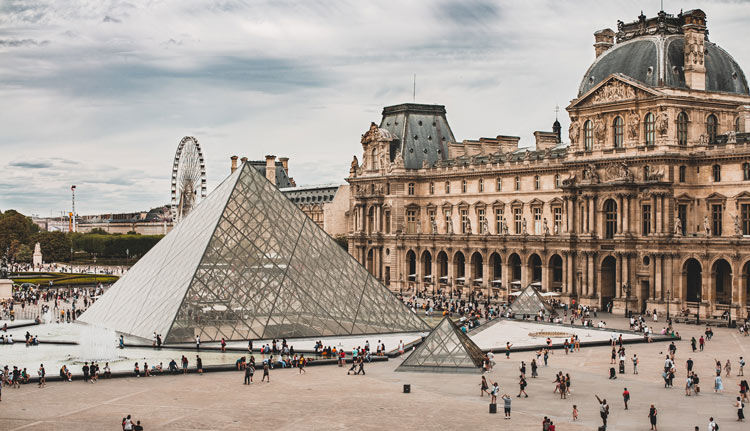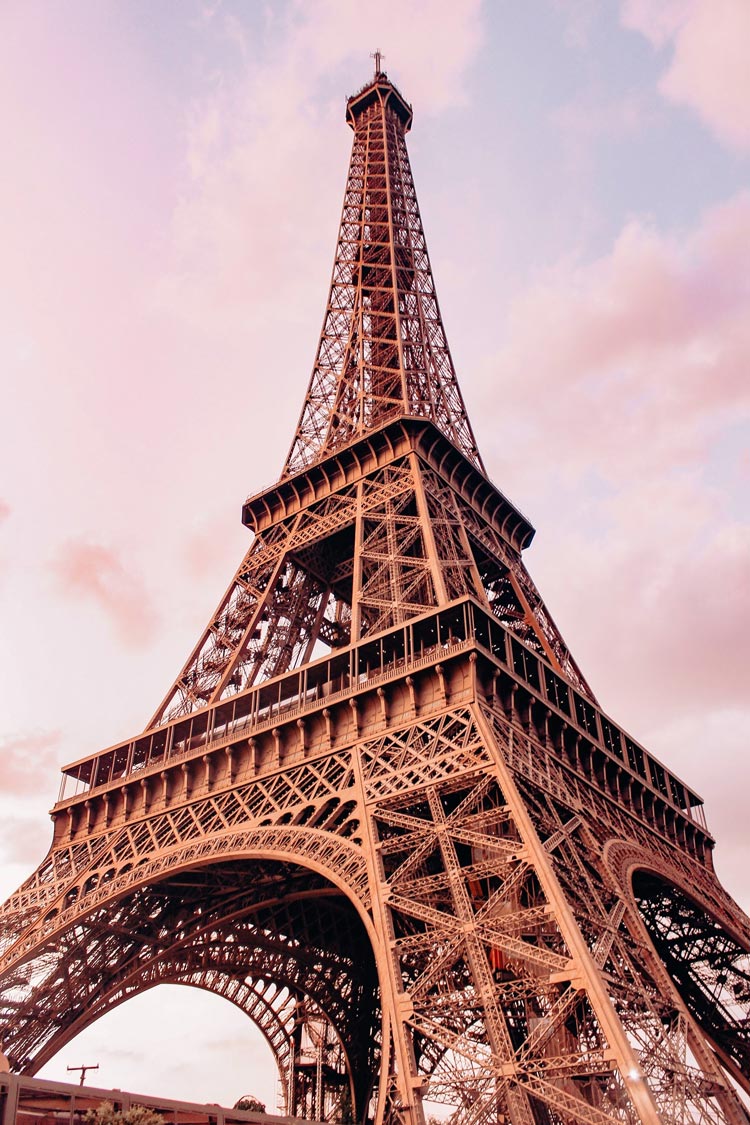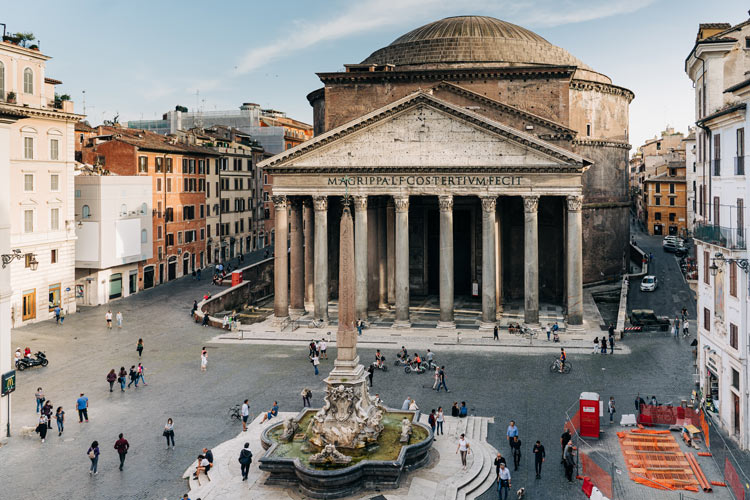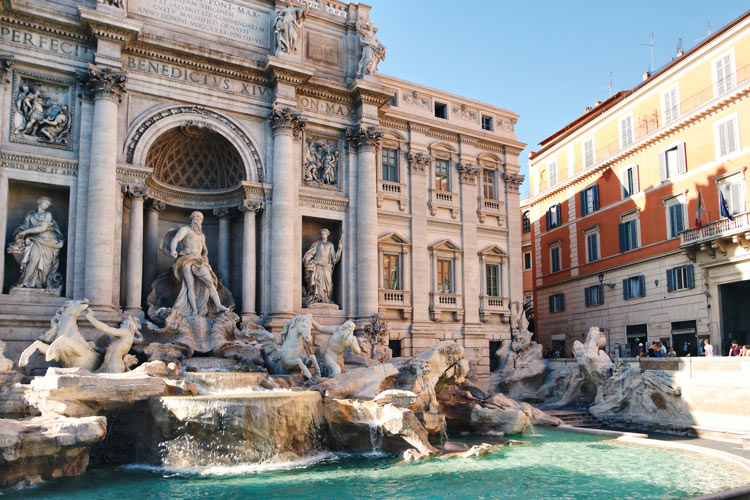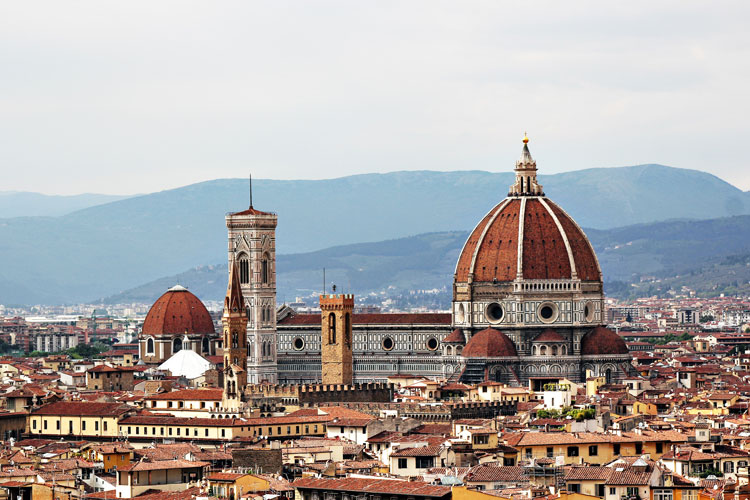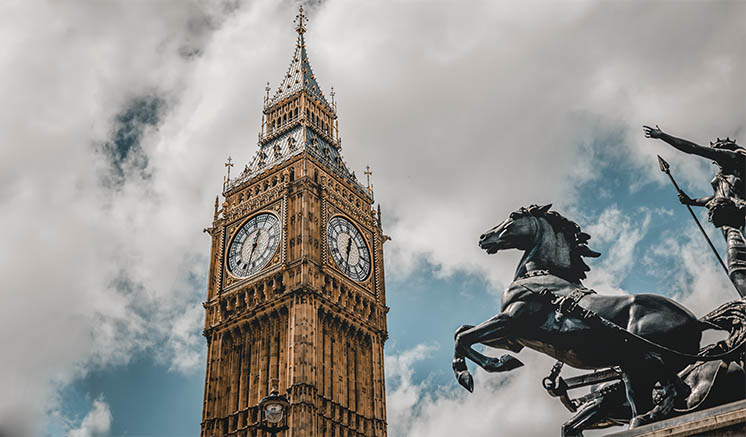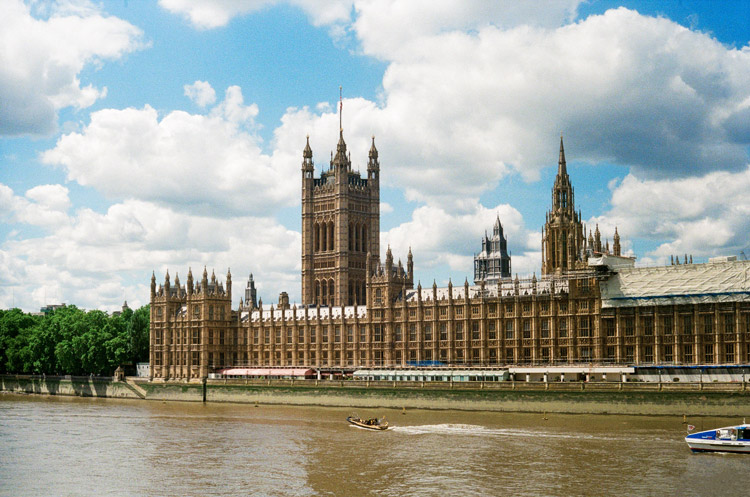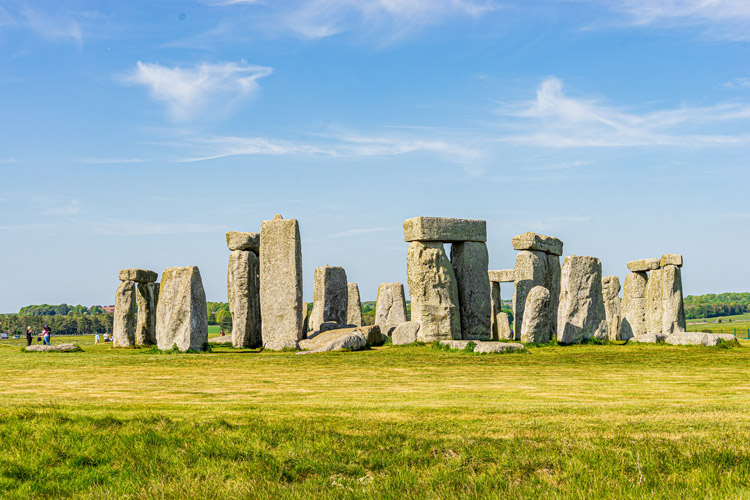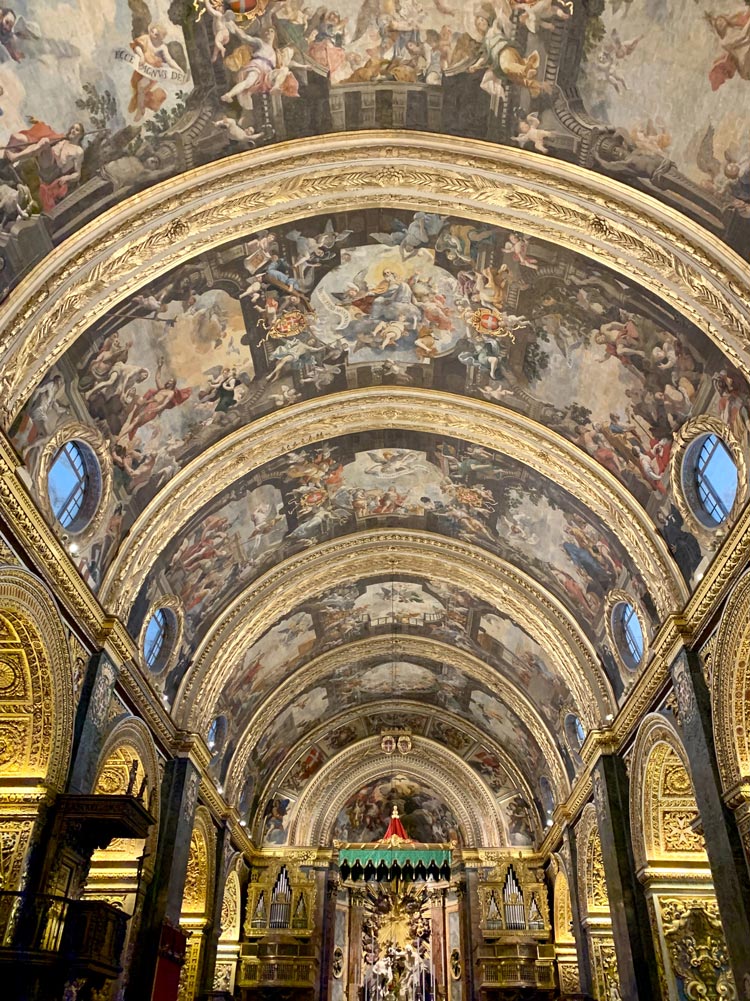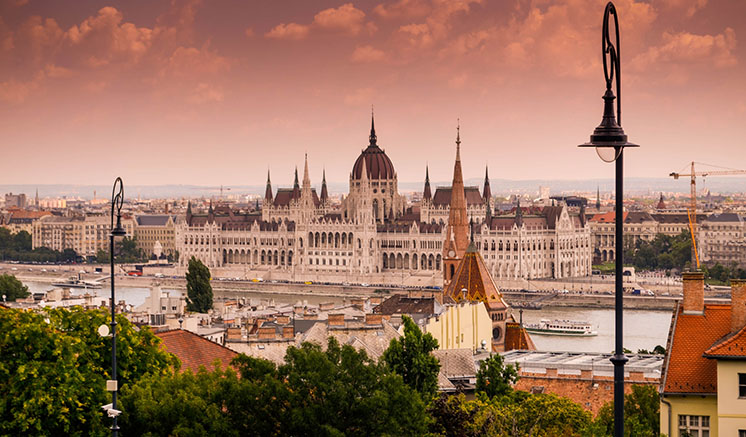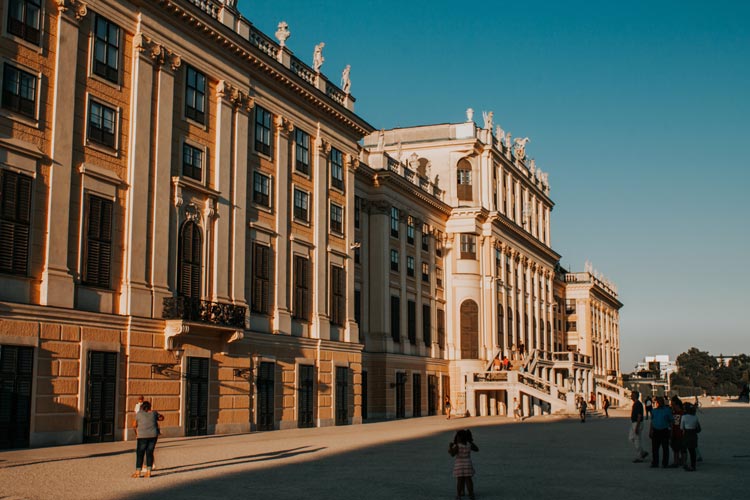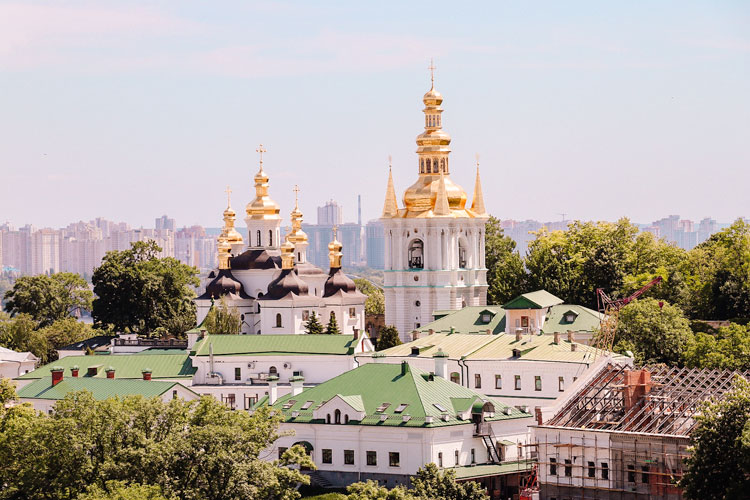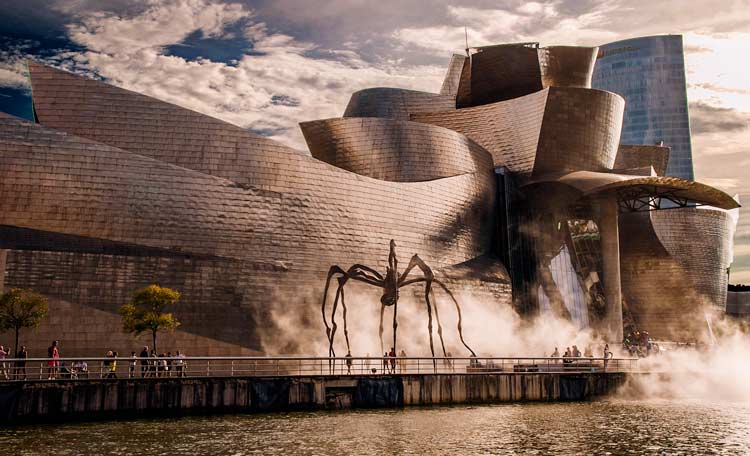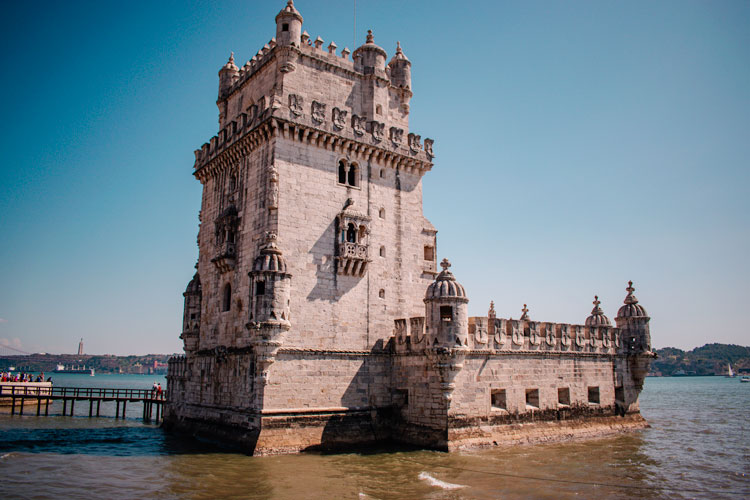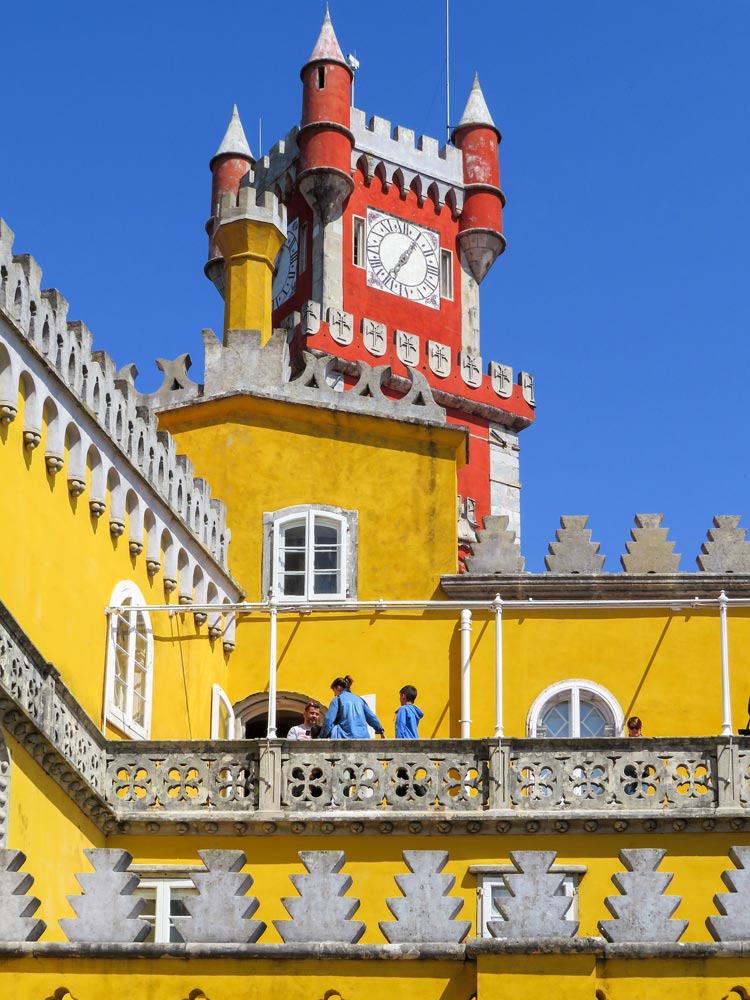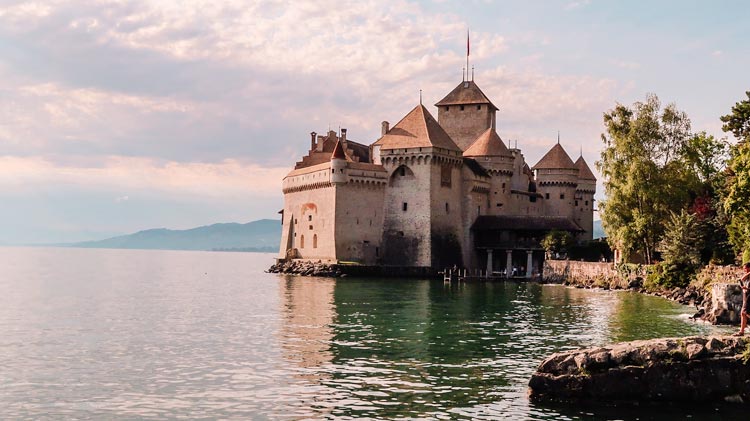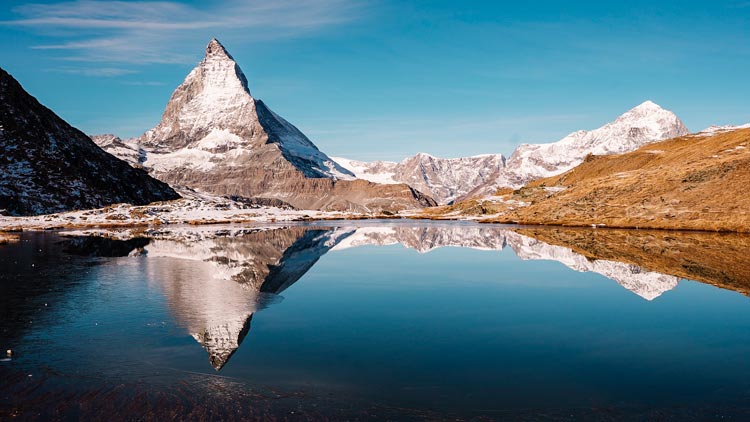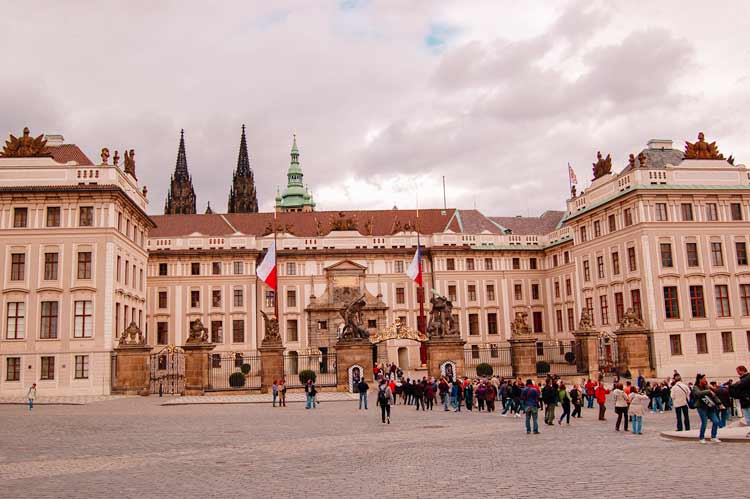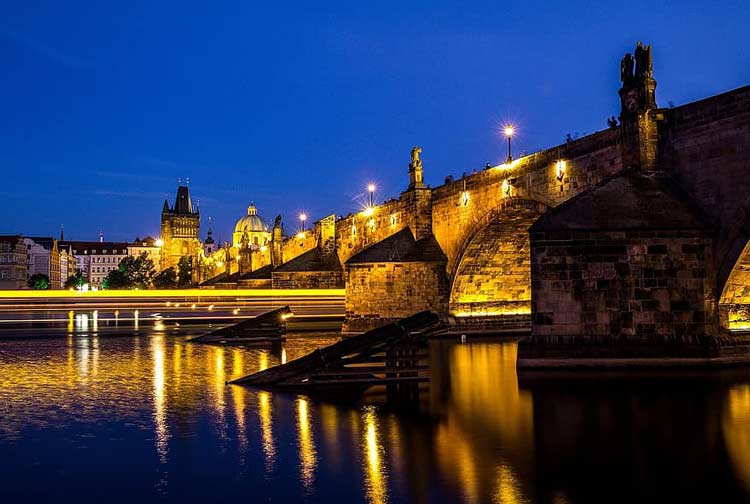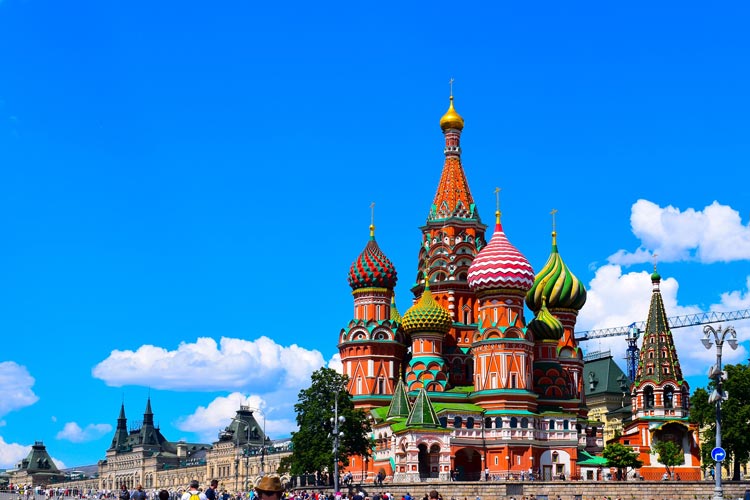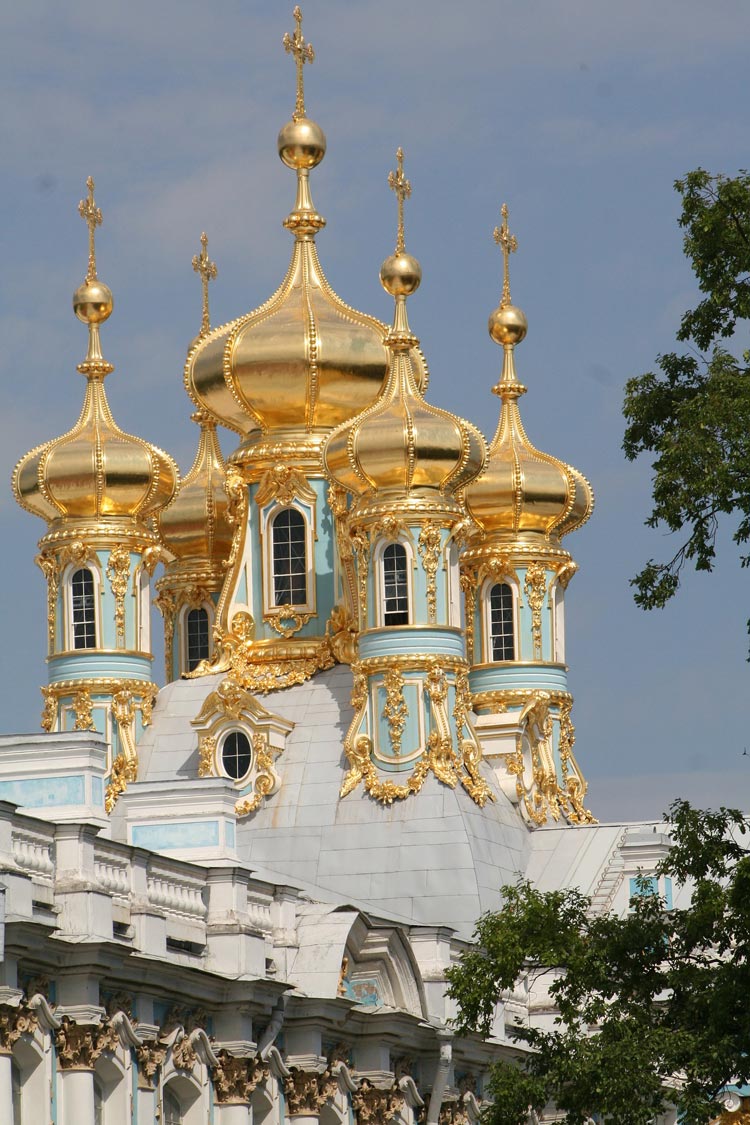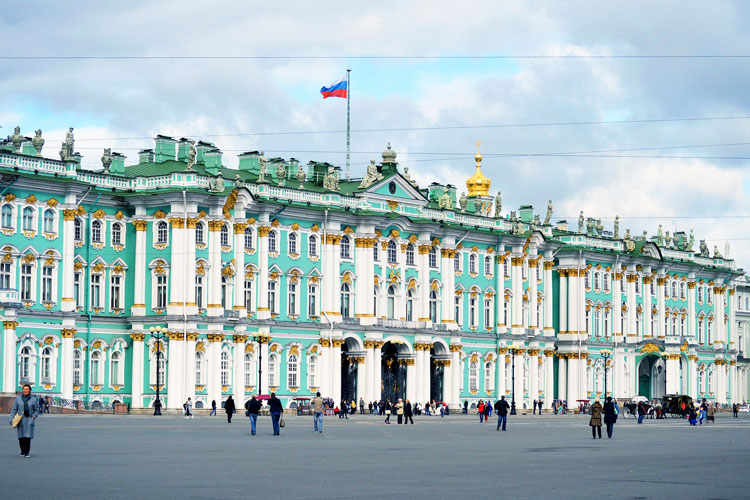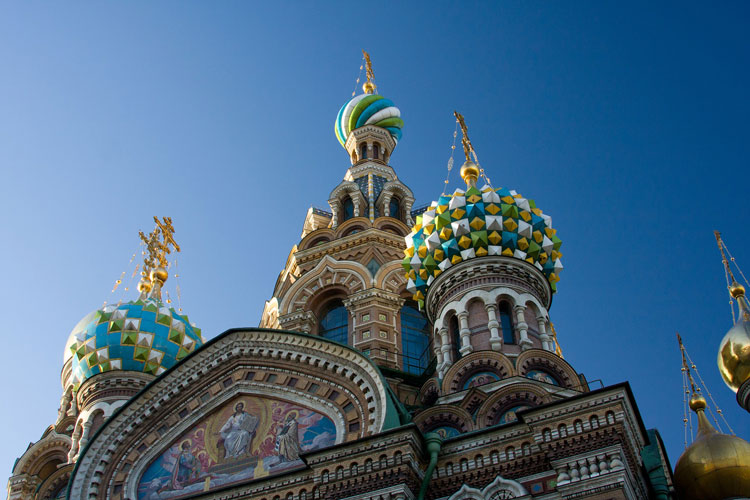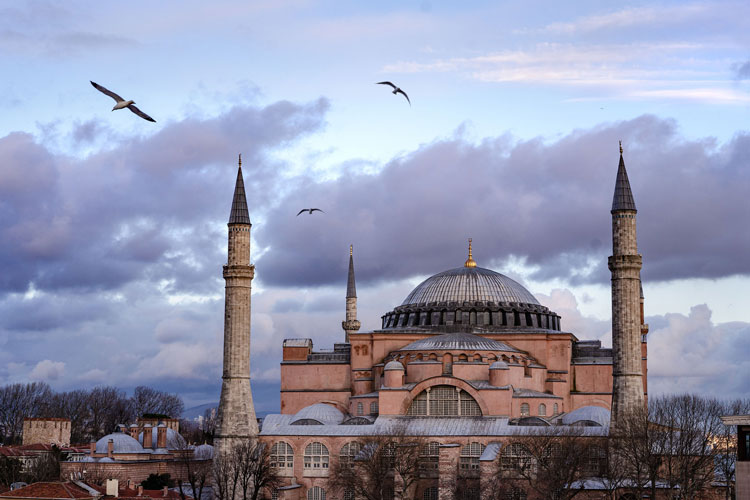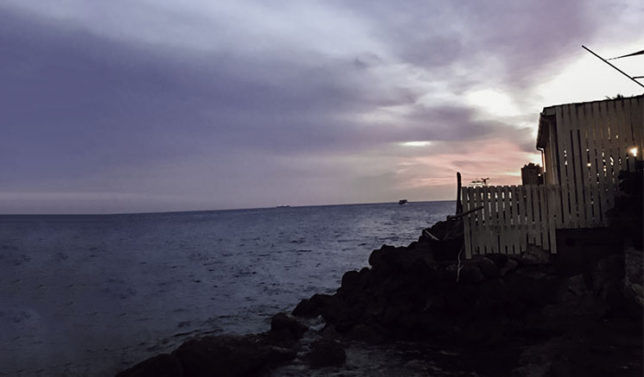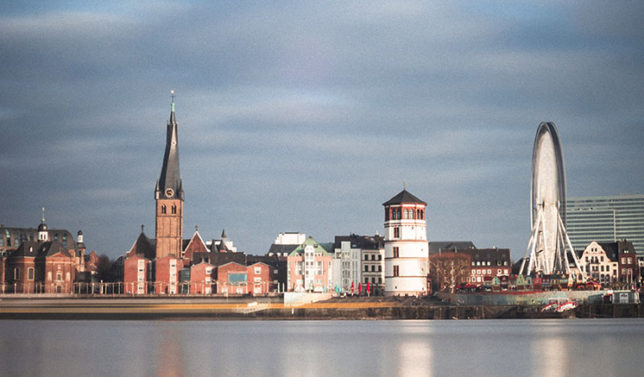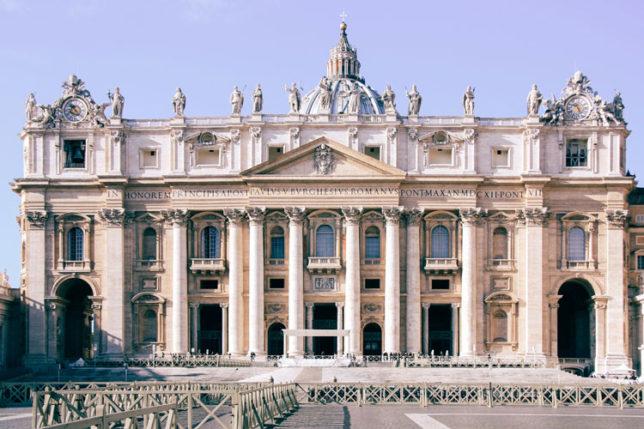A Roundup of the Best Landmarks in Europe Everyone Should Visit
Europe isn’t just the ultimate rite of passage for a budding traveler, it is a melting pot of diverse cultures, histories, and languages.
The continent receives millions of tourists every year. And there are several landmarks in Europe that need no introduction. From the Eiffel Tower in Paris to the Colosseum in Rome, there are myriad popular monuments that make it undisputedly on all European bucket lists.
However, when planning a visit to Europe, it helps to prioritize which landmarks you want to visit.
Below is a list of the most famous European landmarks to guide your trip and get a thorough understanding of the continent through the lens of history and culture.
Think of this list as a virtual tour of the most famous European landmarks, so you can decide for yourself what is worth visiting!
1. NOTRE DAME CATHEDRAL, PARIS, FRANCE
Let’s start in Paris, France, where you’ll find the Notre Dame Cathedral. This Gothic Revival building is an absolute must-see in Paris, and is one of the most famous monuments in Europe. The cathedral is over 800 years old, which means you’ll be seeing a building that has survived for centuries.
In April 2019, the Notre Dame Cathedral caught fire and sustained significant damage. The blaze destroyed the cathedral’s roof, spire, and flying buttresses- features that made it what it was. The building has been undergoing extensive restoration work since then, and it has now reopened its doors to visitors.
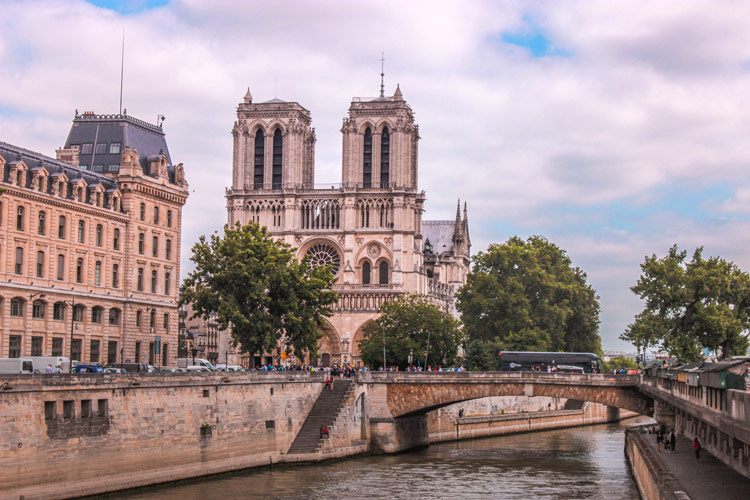
2. ARC DE TRIOMPHE, PARIS, FRANCE
The Arc de Triomphe is one of Europe’s most well-known landmarks. It stands just beside the Champs Elysees and under it is a tomb for those who fought and died for France.
Designed by Jean Francois Chalgrin between 1806 and 1836, the Arc de Triomphe honors those who fought and died for France in the French Revolution and Napoleonic wars. The war scenes depicted on the monument are symbolic of France’s struggle for independence.
If you’re willing to climb some 250 steps to the top of the arch, you’ll be rewarded with a unique vantage view of Paris. I’d say it’s worth the sweat!

3. LOUVRE, PARIS, FRANCE
One of the best-known landmarks in France, the Louvre holds one of the largest art galleries in the world. With over 38,000 objects on display, it would be difficult to take them all in during a single visit!
What attracts millions of visitors to the Louvre every year is, of course, the Mona Lisa by Leonardo Da Vinci. Additionally, some of the other famous paintings on display include works by Rembrandt, Monet, and Vermeer.
The museum is housed within the Louvre Palace. While the exhibits are accessible with an entry ticket, a popular photo-op (and a curious expression of art) is actually the glass pyramid in the palace courtyard. Built in 1988 as part of the ‘Grand Louvre’ project, it has become such an iconic Parisian landmark due to its impressive size and the way that it uniquely reflects light.
Side note: I suggest getting your hands on “The Da Vinci Code”, one of the most famous books set in France, before you go. It will give your visit to the Louvre a whole new dimension.
4. EIFFEL TOWER, PARIS, FRANCE
What’s a roundup of the most famous landmarks in Europe, that doesn’t include the Eiffel Tower?
One of the mainstay symbols of France, the Eiffel Tower is a wrought iron lattice tower located in the Champ de Mars area in Paris. It is named after the engineer Gustave Eiffel, whose company designed and built the tower.
The tower was constructed in 1889 in time for the Exposition Universelle, celebrating the 100th anniversary of the French Revolution. The idea behind its iron lattice design was to represent the might of the ‘new’ France.
The project quickly attracted attention and controversy when the tower surpassed the height of all previous man-made structures and became the tallest building in the world at the time of its completion.
Over time, the symbolic value of the tower has changed. It is now a hallmark of love, and the most popular attraction in Paris – over 7 million people visit the tower every year!
5. MONT-SAINT-MICHEL ABBEY, MONT-SAINT-MICHEL, FRANCE
One of the biggest pilgrimage sites in Europe, Mont-Saint-Michel’s Abbey has now also become a popular European landmark drawing scores of visitors every year.
Sitting in the heart of the tidal island just off the coast of Normandy, it is often considered one of France’s earliest and best examples of Gothic architecture.
The Abbey was built in the 11th century after the founder, St. Aubert, had a vision of Archangel Michael who ordered him to build an abbey on the island that was visible at low tide.
Often called “The Wonder of the Western World”, the Abbey of Mont-Saint-Michel was incredibly important during the Hundred Years War, as it changed hands multiple times and was only recovered by France once they had built a causeway on the bay.
The Abbeys’ most notable part is the Benedictine monastery centered around a grand church with a nave, transept, and cloisters. It’s a stunning juxtaposition of both Gothic and Romanesque styles.
Mont-Saint-Michel and its bay were included in the UNESCO World Heritage Sites in 1979.
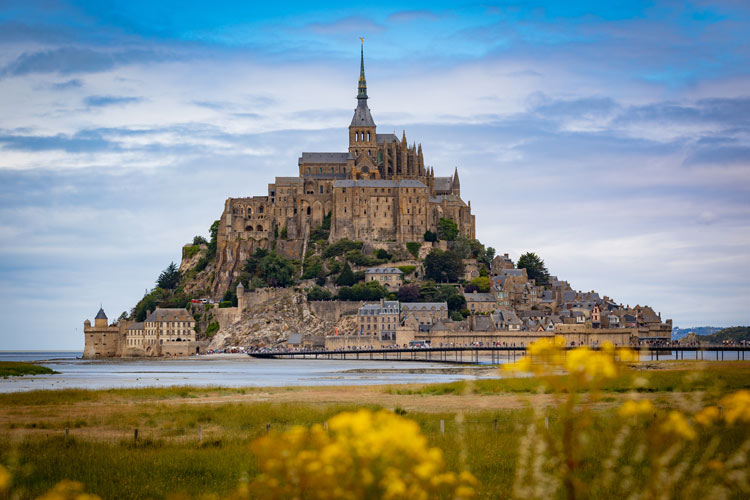
6. PALACE OF VERSAILLES, VERSAILLES, FRANCE
The Palace of Versailles isn’t just one of the most famous European landmarks, but also the grandest building you’d have ever seen.
Located in the town of Versailles, just outside Paris, the palace was built between 1623 and 1661 during the reign of King Louis XIII. After spending his childhood years in the hunting lodge that stood in place of the palace, the king spent an absurd amount of money (roughly half of France’s annual GNP) to build the chateau.
Everything about the Palace of Versailles screams opulence. The style is pure Baroque, featuring lavish ornamentations and gold details.
It is the ultimate example of French grandeur, with six floors filled with gilded rooms, extravagant furniture pieces, and marble bathrooms fit for the “Sun King” – a title King Louis XIII bestowed upon himself as France’s ultimate monarch!
The Hall of Mirrors, the Royal Chapel, the Opera, and the imposing Ambassador’s staircase are a few of the numerous statements of flamboyance the Versailles Palace is filled with.
The exterior of the palace is equally alluring, thanks to its symmetry and manicured gardens, which are host to a collection of modern sculptures.
The Palace of Versailles is best known for being one of the most extravagant palaces in Europe, and should be a must-visit on every traveler’s bucket list.
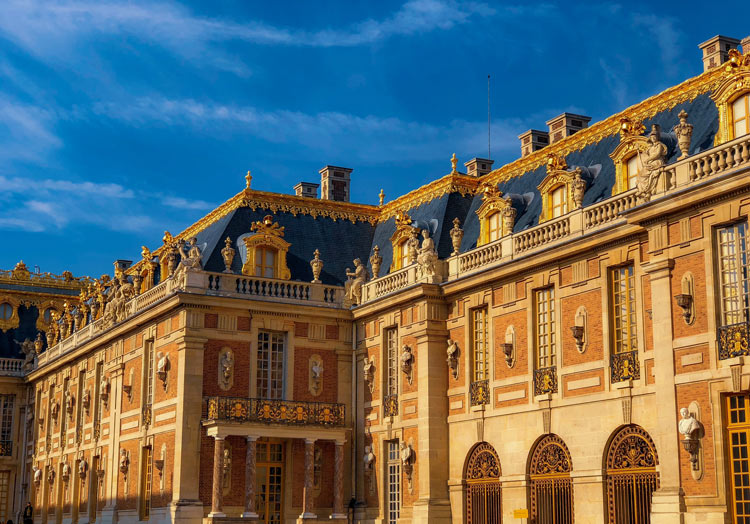
7. COLOSSEUM, ROME, ITALY
The Colosseum is an elliptical amphitheater in the center of Rome. Built between 72 and 80 AD, it is the largest standing amphitheater in the world.
The Colosseum is considered one of the greatest works of architecture and engineering ever produced. It has a four-story exterior, and every floor is built in a different arch style.
It could accommodate 50,000-80,000 spectators. Back in the day, it was used for gladiatorial contests and public spectacles such as mock sea-battles, animal hunts, executions, and reenactments of famous battles or dramas based on classical mythology.
Unfortunately, the Colosseum has suffered a considerable amount of damage, following several instances of vandalism, warfare, and natural disasters.
That said, it is still a preeminent example of the Roman Imperial style. It is no surprise that the Colosseum is listed as one of the New 7 Wonders of the World.
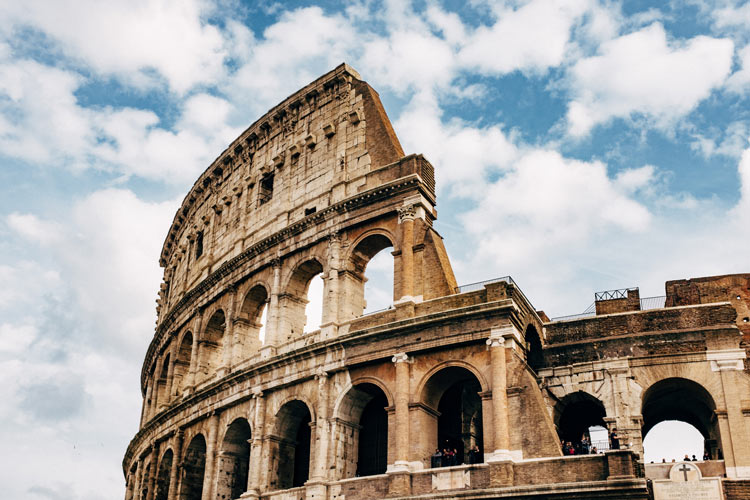
8. PANTHEON, ROME, ITALY
Originally built as a temple over 2000 years ago, the Pantheon is now one of the best-preserved ancient buildings in Rome.
It was built by Marcus Agrippa in 27-25 BC, but was heavily reconstructed by the emperor Hadrian in 126 AD.
The building’s granite Corinthian columns stand up front, with a pediment over the front door decorated with sculptures.
Inside, the highlight is the rotunda, which has an open oculus at its center and is one of the finest examples of coffering in all of Rome.
The building is famously known for its large circular dome with the portico at the front, which was unique in ancient Roman architecture. The Pantheon has the largest unreinforced concrete dome in the world.
The Pantheon has served as inspiration for many important monuments in the Western world, from the Santa Maria del Fiore in Florence to Thomas Jefferson’s library at the University of Virginia.
9. TREVI FOUNTAIN, ROME, ITALY
This historic European landmark dates back to 1732 and sits in an incredible location, right next to the Pantheon and the Colosseum.
Designed by the Italian architect Nicola Salvi, Fontana di Trevi or Trevi Fountain is the largest Baroque fountain in Rome, at 26m high.
It has become a granter of wishes for many tourists who throw coins in the center of the fountain to ensure their return to Rome in the future. An estimated 3000 euros worth of coins are thrown into the fountain every year! All this money is used to provide subsidized essentials to the poor.
So whenever you’re in the Eternal City (Rome), don’t forget to toss a coin in Trevi Fountain, so your future visit to Rome is guaranteed. All for a good cause anyway! 🙂
Built with white travertine stone, Trevi Fountain has featured in quite a few movies like The Roman Holiday and Lizzie McGuire.
P.S. It’s a crime to steal coins from the fountain!
10. DUOMO, MILAN, ITALY
What could be more classic than the architecture of Italy’s Duomo in Milan?
The Milan Cathedral, formally called Metropolitan Cathedral-Basilica of the Nativity of Saint Mary, was started back in 1386.
Fun Fact: The Duomo construction took over six centuries to complete!
It is the largest church in Italy, the second-largest in Europe, and the third-largest in the world.
The Duomo is especially famous for its architecture and for the scores of statues of patron saints adorning its exterior. Inside, the design includes a nave with side chapels and galleries above, supporting tall single-light Gothic windows.
While the facade of Duomo Cathedral exudes jaw-dropping brilliance, for more inspiration you can climb to the top (there’s a small fee) to catch a close-up of the 135 spires set on aesthetic buttresses. You can also enjoy panoramic views of Milan from the roof.
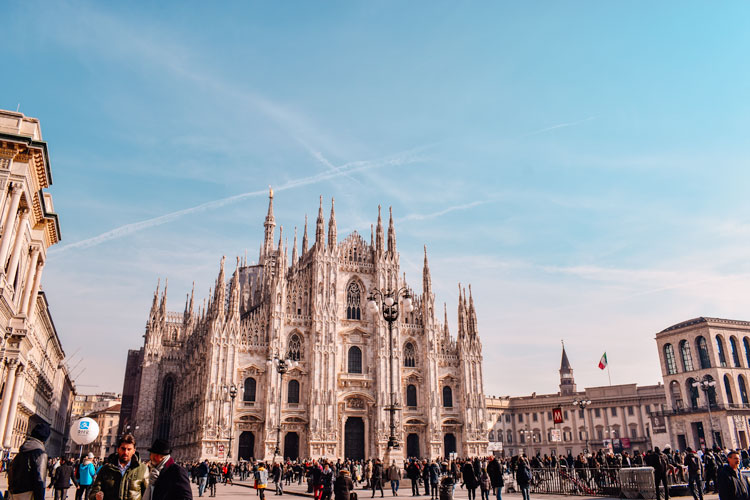
11. LEANING TOWER OF PISA, PISA, ITALY
Probably one of the most photographed monuments in the world, the Leaning Tower of Pisa has to be included in any list of famous European landmarks. Its amazing slant, quirky, marble exterior has made it a favorite subject for artists from all over the world.
Built in 1173 to house the bell tower for a cathedral, it began tilting almost immediately due to an uneven foundation on soft ground.
Over several hundred years amidst construction halts and political turmoil, the tower kept leaning further despite attempts to fix it.
Then, in 2001, an international team of experts concluded that extracting soil from the tower’s northern foundation could pull it back straight up. This worked and the foundation of the tower was solidified to support the structure.
It is now believed that the Leaning Tower of Pisa (one of the Wonders of the World) is likely to remain stable for at least 200 years. Which means you can manage a visit to this popular landmark well within this lifetime! 😉
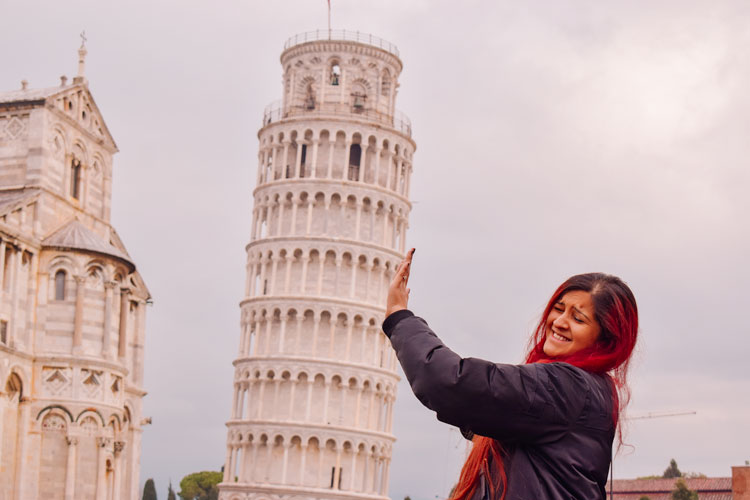
12. FLORENCE CATHEDRAL, FLORENCE, ITALY
The Florence Cathedral, or the Cattedrale di Santa Maria del Fiore, is famous for being one of the most beautiful cathedrals in Europe.
The cathedral was built between 1296 and 1436, and has served as inspiration for artists, poets, and writers. Its beauty makes it a must-see when traveling through Italy. Plus, the ornate gold mosaics lining the walls are stunning – you won’t tire of gaping at these exquisite patterns!
The cathedral was built by Arnolfo di Cambio, and its unique dome was engineered by Filippo Brunelleschi, who is famous for pioneering the use of a circular plan and pointed barrel vaulting.
The Florence Cathedral’s facade is also impressive. Designed in Gothic revival style, Its green and pink marble panels really stand out. Other features include various sculptures of biblical characters.
A masterpiece of Renaissance architecture, Florence Cathedral is an extremely important European landmark and attracts tourists in droves every year.
13. DOGE’S PALACE, VENICE, ITALY
The Doge’s Palace is one of Venice’s main landmarks and a key part of the cityscape.
A One-minute walk away from the Bridge of Sighs, Doge’s Palace is the highlight of St Mark’s Square and houses important pieces of art in its museum.
The Palace was built in the early 14th century and has been home to the “doges” or supreme rulers of Venice for hundreds of years. In this period, it underwent a lot of expansion and modification.
Constructed in Venetian Gothic style, Doge’s Palace is a very impressive building on the outside, but even more so on the inside. It also borrows from Moorish and Renaissance architectural styles.
Inside, you’ll find many “Corte” (courtyards) and balconies of Venetian Gothic design, and some of the walls are painted with detailed frescoes.
Some of the most important pieces of art housed at Doge’s Palace include paintings by Tintoretto and Canaletto, sculptures by Donatello and Veronese, and tapestries by Rubens.
Apart from its artistic significance, Doge’s Palace is also an important landmark as it symbolizes Venice’s power during the Middle Ages.
A must visit in Venice, Doge’s Palace is one of the most famous landmarks in Europe everyone should know about.
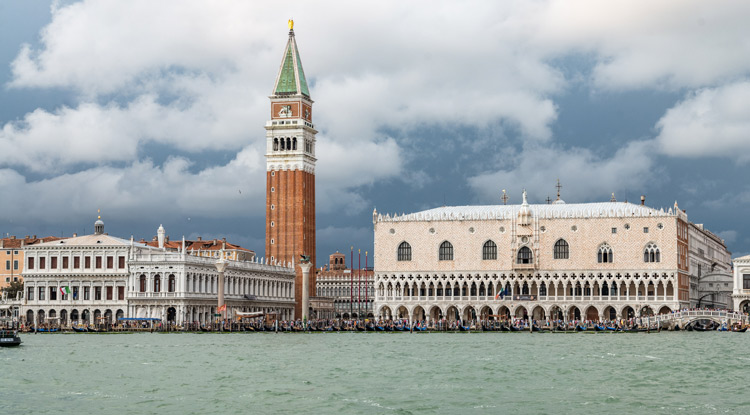
14. BIG BEN, LONDON, ENGLAND
Big Ben is the nickname for a large bell tower clock located in the Palace of Westminster, London.
A permanent feature of London’s skyline, It is a cultural icon that continues to symbolize Britain’s parliamentary democracy since the last almost 150 years.
Contrary to popular understanding, the name Big Ben actually refers to the largest of the five bells inside the tower, rather than the tower itself.
The tower (called Elisabeth Tower) was completed in 1859 in neo-Gothic style, and is 320-feet-high.
Big Ben was declared a UNESCO World Heritage Site in 1987. While you may have spotted this iconic European landmark in many postcards and establishing shots in movies, Big Ben is one of the top things to do when you’re in London.
15. BUCKINGHAM PALACE, LONDON, ENGLAND
The Queen herself lives in Buckingham Palace in London, and it’s well worth a visit even if you’re not planning to knock at the door.
Prior to the current royal family, the palace has served as a residence for monarchs and sovereigns for hundreds of years. Queen Victoria was the first sovereign to make it her home, back in 1837.
In addition to a whopping 775 rooms, Buckingham Palace includes the stunning royal garden – the largest private garden in London.
During the summer, the palace is open to visitors. You can tour their State Rooms and catch the magnificent art on display.
However, an extremely popular thing to do in London is to watch the Change of Guard ceremony in the forecourt. This takes place every day in the summer, and on alternate days in the rest of the year.
[You Might Like: 10 Typical English Things to Do in London]
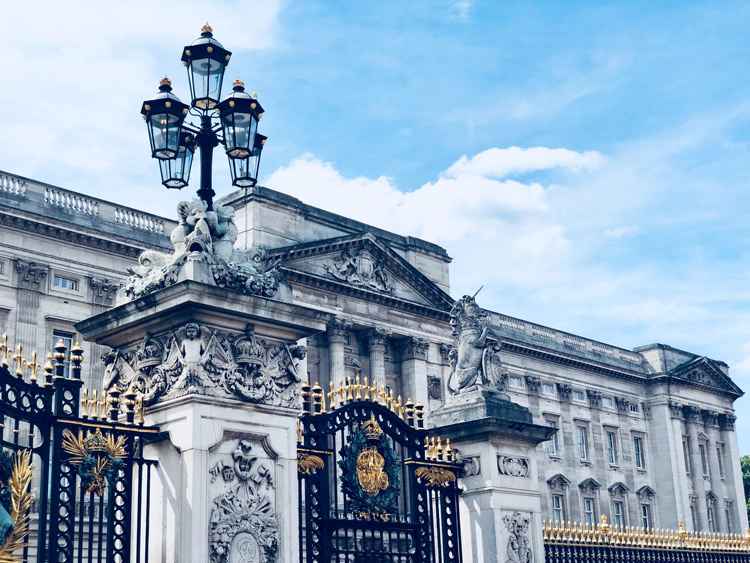
16. PALACE OF WESTMINSTER, LONDON, ENGLAND
Built in 1840, the Palace of Westminster is one of London’s most recognizable monuments.
This huge gothic building next to the River Thames is where the Houses of Parliament are located. The building is also home to five bells – one of which is Big Ben. In fact, Big Ben, the name for the bell, is one of London’s most commonly-used nicknames.
When the parliament is not in session, you can visit the Palace of Westminster for an entrance fee.
Situated between Westminster Bridge and Westminster Abbey, the Palace of Westminster is a UNESCO World Heritage Site since 1987.
17. STONEHENGE, WILTSHIRE, ENGLAND
Stonehenge is not only an extremely famous landmark in Europe, it’s also one of the most curious ones.
This prehistoric monument is believed to have been built between 3000 and 1600 BC on the Salisbury Plain in Wiltshire, England. It is composed of a formidable circular setting of large standing stones set within earthworks.
The site has been used as a place of worship since ancient times, but it’s still not known for sure who built it or why.
Today Stonehenge is a UNESCO World Heritage Site and the most visited historic monument in England, attracting roughly 8,00,000 people every year – which makes it really worth putting on your European travel list!
This tour includes a visit to the site and an audio guide to understand the historic relevance of this important European landmark.
18. WINDSOR CASTLE, BERKSHIRE, ENGLAND
Windsor Castle is the official serving residence of the royal family. It is located in the county of Berkshire. The Queen spends many of her weekends at the castle.
One of the most famous British landmarks, it is the largest occupied castle in the world, and the longest-occupied castle in Europe.
Windsor Castle was built by William the Conqueror in the 11th century, and has been in continuous use by the royal family ever since.
The interior is full of large, impressive rooms and the exterior is no less majestic. Many famous state banquets and ceremonies that take place in the UK happen here. The gardens of the castle are some of the finest in England. One of its most famous features is the Round Tower, which is located in the middle of the castle’s quadrangle.
Throughout the year, parts of the castle are open to the public for a fee. If you visit, make sure to book tickets online in advance to avoid waiting in long queues.
[You Might Like: 42 Free Things to Do in Manchester]
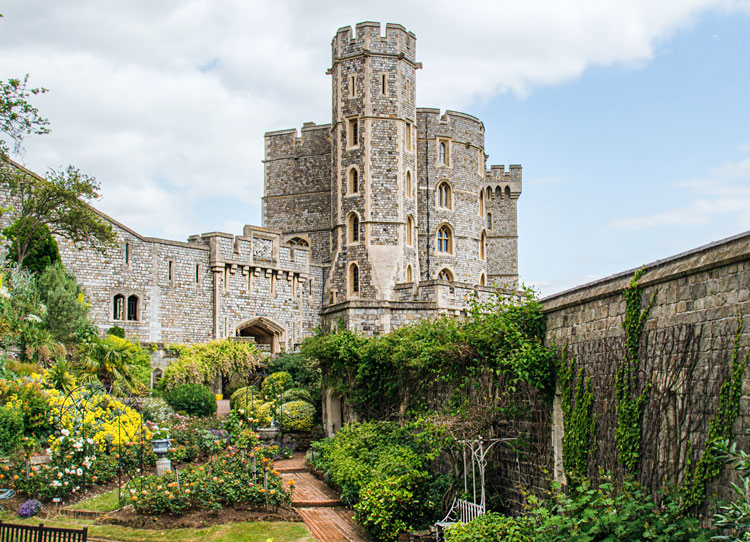
19. ST. PATRICK’S CATHEDRAL, DUBLIN, IRELAND
This is the national cathedral for the Church of Ireland. Founded in 1191, this beautiful monument took 41 years to be constructed.
St. Patrick’s Cathedral is known for its beautiful stained glass windows which are absolutely stunning. The cathedral was built to hold the remains of St. Patrick, Ireland’s patron saint, after his death and features stunning architecture throughout.
Jonathan Swift, the author of Gulliver’s Travels, is also buried here.
One of the few remaining pieces from medieval Dublin, St Patrick’s Cathedral is among the main attractions in Ireland.
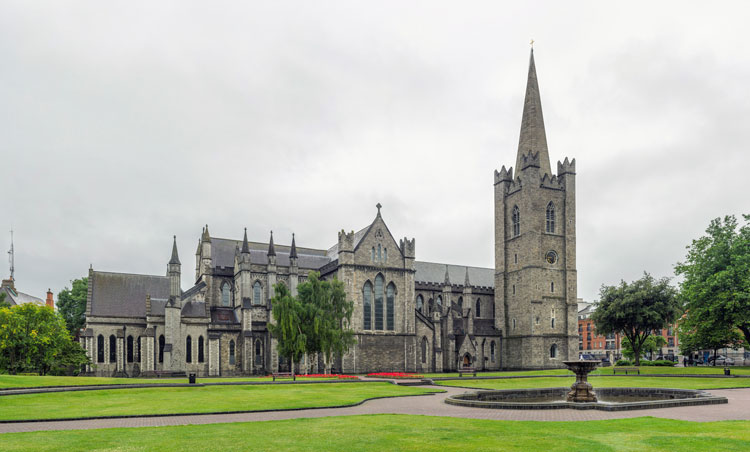
20. NEUSCHWANSTEIN CASTLE, BAVARIA, GERMANY
Set high on a hill above the village of Hohenschwangau near Füssen in south Bavaria is the castle that inspired Walt Disney’s ‘The Sleeping Beauty’.
King Ludwig II of Bavaria commissioned the Neuschwanstein Castle in 1869 and construction began a year later. It was completed in 1886, but Ludwig died soon after under mysterious circumstances and never saw his dream castle finished.
Presently, you can tour the Romanesque Revival castle and partake in its grandeur. Included in the price is an audio guide that will help you appreciate the castle’s stunning architectural details. Tickets can be purchased from their official website.
Though the castle interiors are every bit worth a visit, you can get the best views of Neuschwanstein from the Marienbrücke bridge (you’ll always see people queueing up here to catch that perfect gram-worthy picture).

Neuschwanstein Castle is one of the most popular tourist destinations in Germany, so much so that over 1.3 million people visit here each year.
The castle sits perched on a hill close to the Austrian border, and its setting really isn’t anything short of a fairytale. It is especially a popular pitstop on the famous Romantic Road in Germany.
21. BRANDENBURG GATE, BERLIN, GERMANY
The Brandenburg Gate is one of the most important landmarks in Europe because it enables visitors to view the city from a historical lens.
Located in the heart of Berlin’s Mitte borough, it has become a mandatory feature of all German postcards.
The Brandenburg Gate was built between 1788 and 1894, at the behest of Friedrich Wilhelm II, as a symbol of peace.
Ironically, the Brandenburg Gate has had a rather tumultuous history. After the bloody Prussian defeat, Napoleon rallied his army in a triumphal procession through the gate. The structure was also used as a symbol when the Nazis ascended to power. It suffered damage during the WW2 bombings, although much less than the rest of the city.
However, the Brandenburg Gate became a cornerstone of peace when, in 1989, people across the city gathered here to celebrate the fall of the Berlin wall.
Today, this neoclassical European monument symbolizes Berlin’s sobriety and kind reception. No matter your political views, don’t miss a visit to the Brandenburg Gate when you’re in the city!
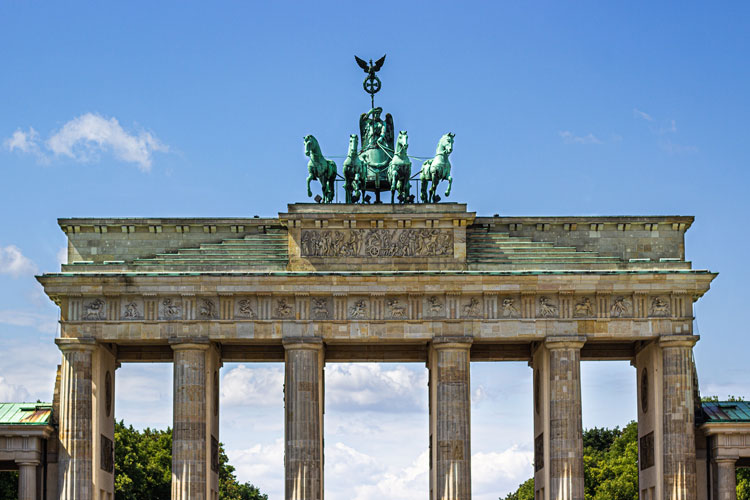
22. REICHSTAG, BERLIN, GERMANY
The Reichstag building in Berlin might not look like much, but once you get inside you’ll be amazed – the design is one of the most beautiful in Europe.
The Reichstag holds the lower house of Germany’s Parliament, the Bundestag. The most fascinating feature of the building is the Reichstag dome, a huge glass dome with a 360-degree view of the Berlin cityscape. There are also the spiral ramps leading up through the building, which add to its unique design.
Conceptualized and built by Norman Foster and Waagner-Biro, Reichstag Dome symbolizes the reunification of Germany.
Visiting the Reichstag is free, on days when the parliament is not in session. You might have to book days in advance, though. Also, make sure to get the audio guide (included in the tour) as it offers compelling insights about the building and Berlin’s history.

23. ST. PETER’S BASILICA, VATICAN CITY
Also known as The Papal Basilica of Saint Peter in the Vatican, St. Peter’s Basilica is the most important and coveted Catholic Church in the world.
The Basilica was built in the 16th century over the place where Saint Peter, the head of the apostles and the first Pope was buried. The Basilica is shaped like a Latin cross with an extended nave in the center.
One of St. Peter’s Basilica’s most impressive features is Michelangelo’s Pieta. There are also other incredible pieces of art all over the church, including Bernini’s Baldacchino, a bronze Baroque sculptured canopy.
Completed in 1506, St. Peter’s Basilica is seminal to Renaissance history, and one of Europe’s most famous landmarks.
The Basilica’s dome is the largest of its kind and can be seen from miles away. If you’re planning to visit, book well in advance as there is a limited number of daily visitors allowed.
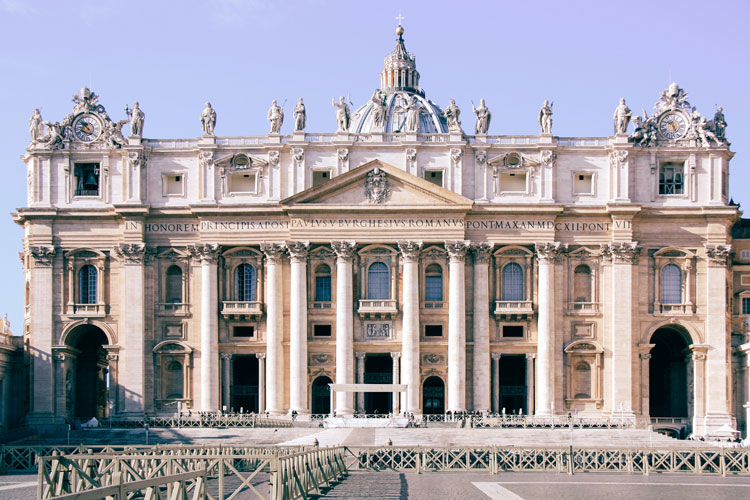
24. THE SISTINE CHAPEL, VATICAN CITY
Think Sistine Chapel, and Michelangelo is the first name that springs to mind.
This is where the Pope holds all of his private meetings with religious leaders, so it’s definitely worth seeing when you’re in the Vatican.
The Sistine Chapel is renowned for the frescos painted on its ceiling by Michelangelo, depicting scenes from the book of Genesis. Visitors can also admire The Last Judgement, his work along the walls of the chapel, which show more biblical scenes.
The chapel was built between 1473-1481 and was named after Pope Sixtus IV. Even though it’s best known for its ceiling, the chapel has frescoes and murals from various other artists like Botticelli, Rosselli and Perugino.
In fact it’s safe to say that the Sistine Chapel contains the most beautiful frescoes in Europe and the world.
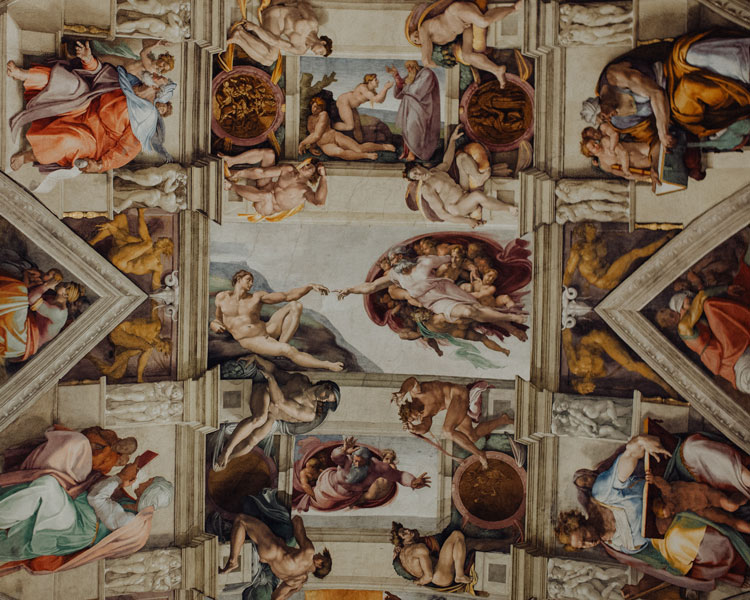
25. APOSTOLIC PALACE, VATICAN CITY
The Apostolic Palace is the official residence of the Pope, the head of the Catholic Church, and is located in the Vatican. This is where he lives; works; and entertains guests. If you’re lucky, you might even spot him on the window as he sometimes likes to come out and wave to the visitors.
Aside from being the Pope’s home, the Apostolic Palace also contains administrative offices where governance functions of the Vatican are managed. Additionally, there are chapels (including the Sistine Chapel), art galleries, the Vatican Library, and the Vatican Museum.
Also called Papal Palace, the building covers a sprawling 162,000 square meters and embodies art in its abundance of frescoes, paintings, and grand art.
Apostolic Palace is one of the most important buildings in Vatican City and in Europe.
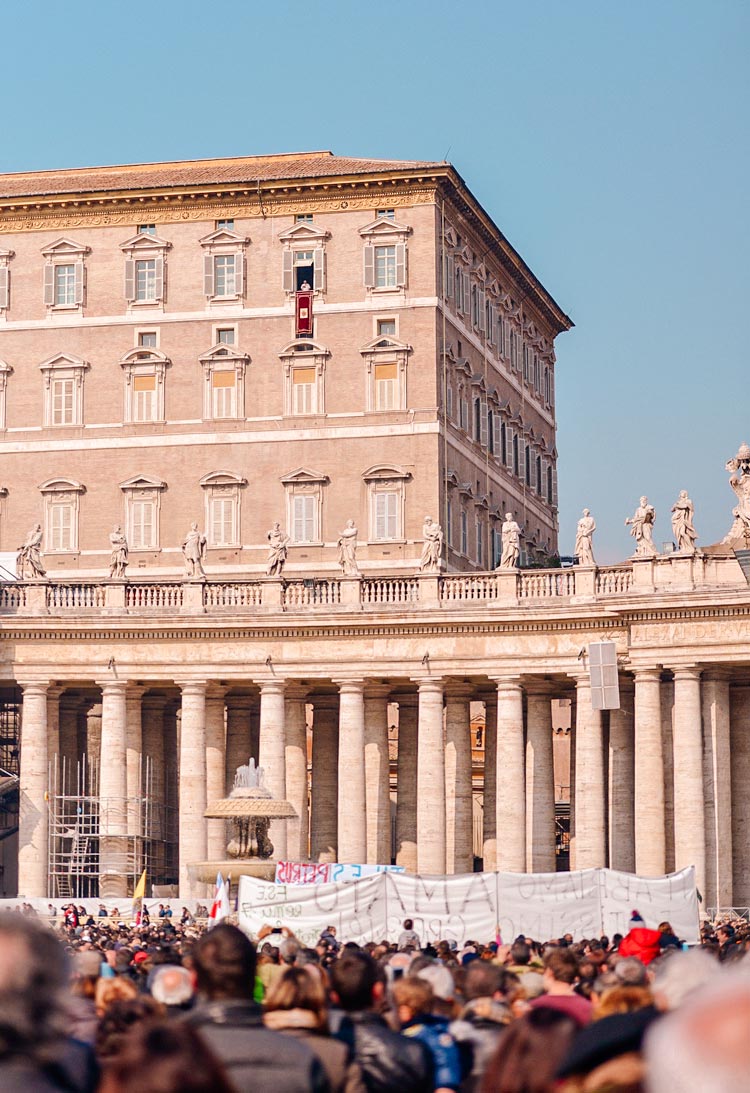
26. SAINT JOHN’S CO-CATHEDRAL, VALLETTA, MALTA
Constructed in the 16th century, Saint John’s Co-Cathedral in Valletta (the capital of Malta) is housed within a monastery. It is famous for its intricate stone carvings and fine artwork. The cathedral is a masterpiece in Maltese Baroque art. Throughout you will find elegant paintings and sculptures, as well as ornate marble flooring, grand columns, and frescoed ceilings.
The façade of the cathedral is covered with Mediterranean pink stone, and its minimalistic look is a stark contrast to the plush, gilded interior.
Saint John’s Co-Cathedral is home to several beautiful works of art, including the famous painting “The Beheading of Saint John”, by Michelangelo Merisi da Caravaggio.
One of the most important landmarks in Valletta and in Europe, the cathedral is a mandatory visit.
27. HUNGARIAN PARLIAMENT BUILDING, BUDAPEST, HUNGARY
Adorning Budapest’s skyline, the Hungarian Parliament Building is the seat of the National Assembly of Hungary. It is also one of the most famous monuments in the country.
Designed in 1902 by the architect Imre Steindl, the Parliament stands on the bank of the river Danube, on the Pest side of the city.
The style is Gothic-Revival, with a central dome built in Renaissance Revival design. Inside, there are ten courtyards with over 691 rooms, 21 conference halls, and a maze of corridors, staircases, and passageways.
Both the outer facade and the interior of the building depict sculptures and reliefs representing famous Hungarian military figures. The coat of arms of Hungary is displayed prominently on the exterior.
The building of the Hungarian Parliament is guarded by the members of the Hungarian National Guard.
28. BUDA CASTLE, BUDAPEST, HUNGARY
Perched on top of a hill, Buda Castle overlooks the Danube and offers spectacular views of the Hungarian capital.
The castle falls on the ‘Buda’ side of the river, and is home to the Hungarian National Gallery, and the Budapest History Museum. The castle was built in 1265 but underwent several changes up until the 18th century.
Because of its strategic place in Hungarian history, Buda Castle was declared a part of the Budapest World Heritage Site in 1987.
The castle hill is surrounded by the touristy Várnegyed (Castle Quarter), which houses some great restaurants and bars.
Buda Castle is one of the most popular attractions in Hungary and has been a site of historic importance for hundreds of years. If you’re spending a few days in Budapest, don’t forget to check these 6 must-do things off your list.
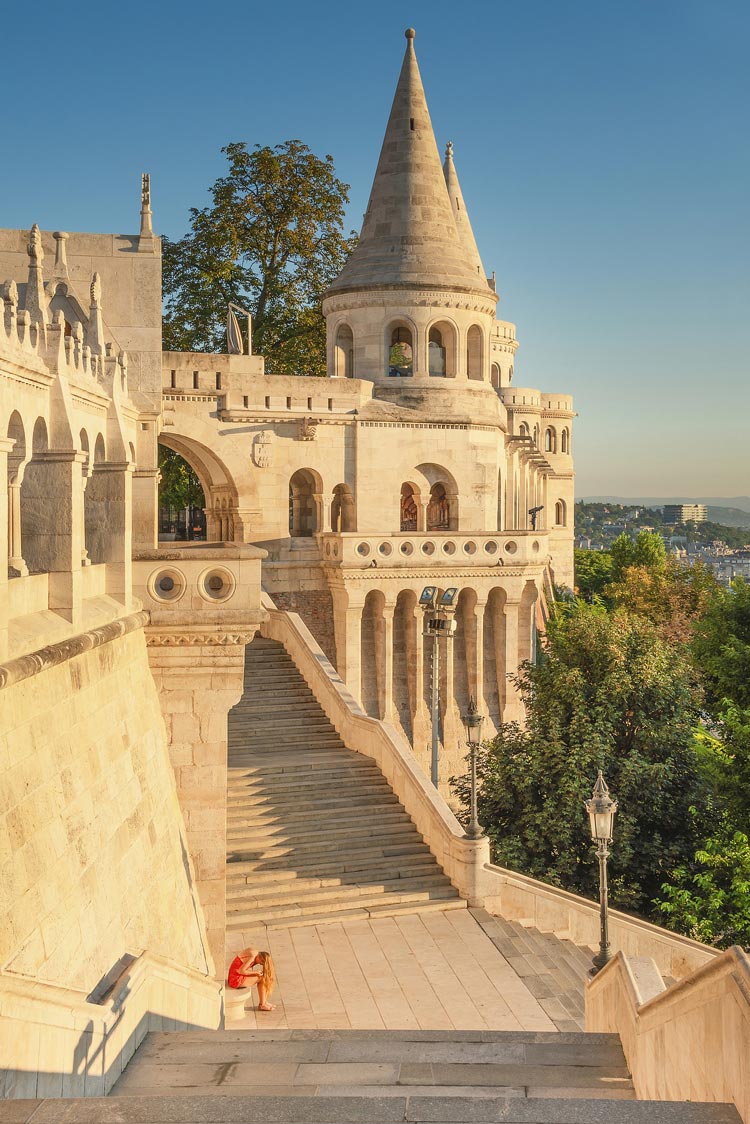
29. SCHÖNBRUNN PALACE, VIENNA, AUSTRIA
Previously a summer residence for the Habsburg rulers, Schönbrunn Palace has over 1,400 rooms and is now a UNESCO World Heritage Site.
“Schönbrunn” literally means “beautiful well”, and the palace gets its name from an artesian spring well that runs under its gardens.
Schönbrunn Palace spans over 300 years of Hapsburg history. It reflects the diverse tastes, interests, and lifestyles of all the monarchs inhabiting it over the centuries.
The Schönbrunn Gardens form an important extension of the palace. Adorned with fountains, statues, and ornate pavilions, they are among the few Baroque gardens in Europe to have remained in their original style.
Schönbrunn Palace is the most popular tourist attraction in Vienna, with over 3.8m visitors per year.
30. KYIV PECHERSK LAVRA, KYIV, UKRAINE
Also called Kyiv Monastery of the Caves, Kyiv Pechersk Lavra is an Orthodox Christian monastery which was built in 1051. It consists of two complexes, the Upper Lavra and Lower Lavra. Each one has its own church, cathedrals, buildings, bell towers, and caves.
The caves are the highlight of the monastery, and served as burial grounds for the monks who resided here.
Kyiv Monastery is built in elaborate Baroque style. The monastery gives its name to the neighborhood in which it is located. It is also recognized as a UNESCO World Heritage Site, together with the Saint Sophia Cathedral.
An important cultural landmark in Europe, the monastery currently accommodates up to 100 monks and attracts large numbers of pilgrims year on year.
31. ACROPOLIS, ATHENS, GREECE
Not only is the Acropolis of Athens one of the most famous landmarks in Europe, it’s also one of the oldest.
Built on a rocky outcrop above the city in the 5th century BC, the citadel was once the shining pinnacle of Ancient Greece – home to the city of Athena and a thriving theater community.
Over the thousands of years, it has withstood innumerable invasions, fires, and earthquakes. Today, the Athens Acropolis is the most visited historical site in all of Greece – drawing crowds from far beyond its borders.
The Parthenon, Temple of Athena Nike, and Erechtheion are just some of the ruins you can explore at the Acropolis. It might be worth taking a guided tour to fully absorb the historical significance of all the archeological remains.
[You Might Like: Most Famous Landmarks in Greece]
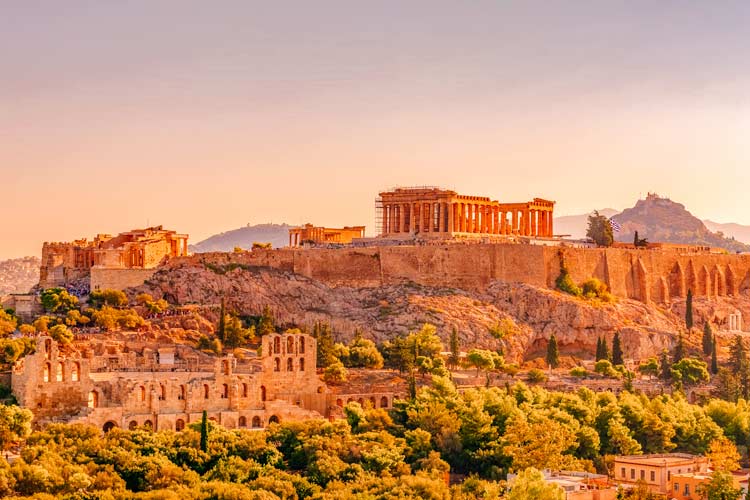
32. PARTHENON, ATHENS, GREECE
The Parthenon is a temple on the Acropolis of Athens, and is one of the most important Greek landmarks. It was built in 447 BC to replace an older temple destroyed by the Persians in 480 BC.
It is dedicated to Athena, goddess of wisdom and patroness of Athens.
The Parthenon is the most significant surviving building of Classical Greece, generally considered to be the culmination of the development of the Doric order. Its decorative sculptures are considered some of the high points of Greek art.
An enduring symbol of Ancient Greece, the Parthenon is one of Europe’s most iconic landmarks.
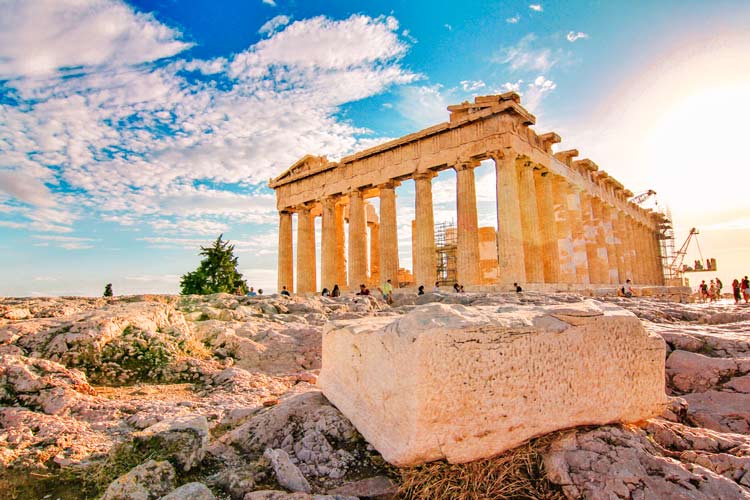
33. GRAND PLACE, BRUSSELS, BELGIUM
The Grand Place, or Grote Markt, is the main square in Brussels. The high gothic-style buildings surrounding the Grand Place tell a tale of medieval Belgium and its many tradesmen including weavers, drapers, and brewers.
The square is flanked by the 15th century Town Hall and the former “Bread House”, now home to the Brussels City Museum.
An important archetype of aesthetic wealth, the Grand Place is considered one of the prettiest squares in the world.
It was added to the UNESCO World Heritage Sites list in 1998.
While the square hosts festivals and city-wide celebrations throughout the year, the Grand Palace is especially worth visiting during the Assumption Day Flower Carpet installation in August every alternate year. You can also catch Brussels in action at the Grand Place during Christmas and on New Year’s eve.
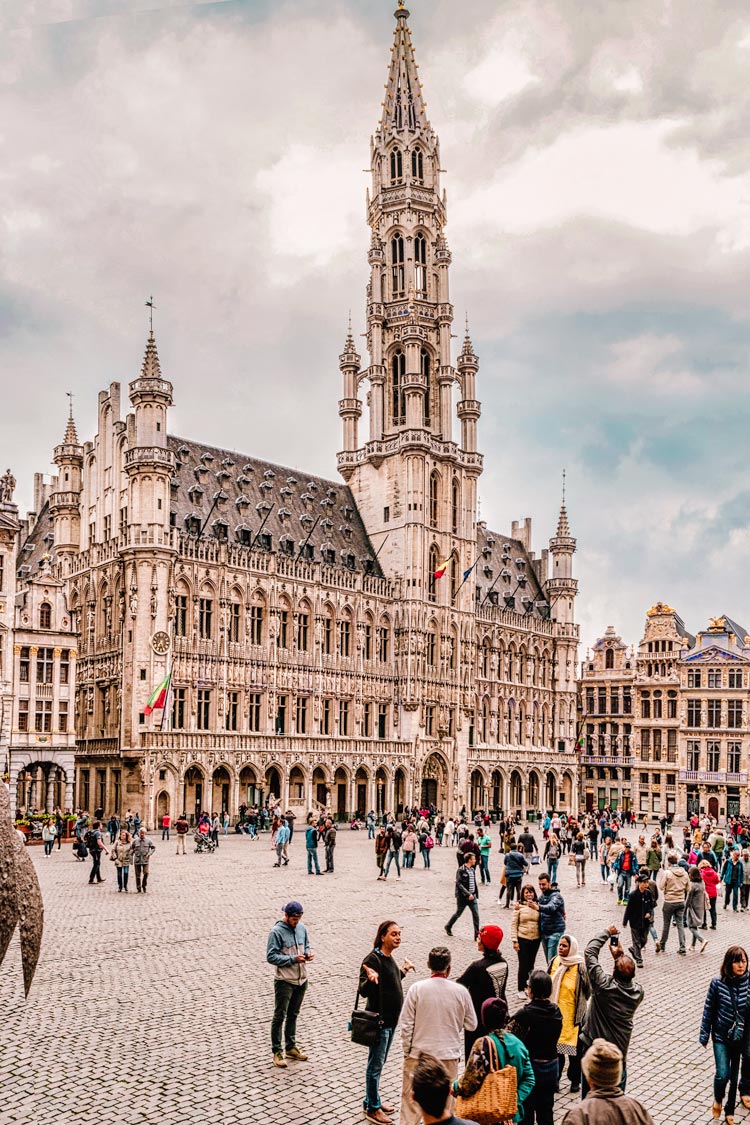
34. ALHAMBRA PALACE, GRANADA, SPAIN
The Alhambra has remained emblematic of Spain’s Moorish history for over 700 years since its construction in the 13th century.
Built as a military base for the Nasrid Dynasty, the palace/fortress is one of the best-preserved historical examples of the Islamic world. It also carries subtle elements from the Spanish Renaissance period.
The Alhambra gets its name from the Arab word Al-Ḥamrā, which means ‘the red one’. Given its typical red-orange hue, it’s also called “the red fortress”.
Today it is one of Spain’s major tourist attractions, and the most visited monument in Andalusia.
The Palace is situated in close proximity to Granada’s Cathedral and it sits on top of the hill overlooking the city. Make sure to visit the Generalife Gardens as well, for a unique vantage view of the palace.
Alhambra has been a UNESCO World Heritage Site since 1984.
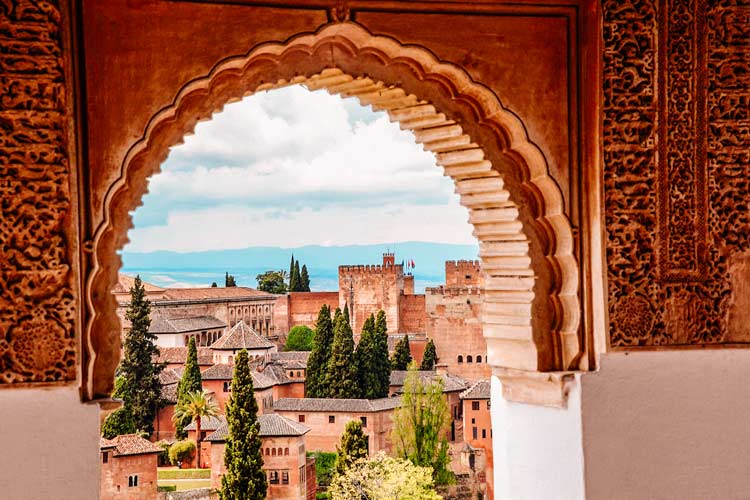
35. GUGGENHEIM MUSEUM, BILBAO, SPAIN
Situated on the river Nervión in Bilbao, the Guggenheim Museum is one of the most famous landmarks in all of Spain. The museum was inaugurated in 1997 by King Juan Carlos I, and is one of the most impressive buildings you’ll ever see with its striking exterior design.
The museum was designed by Frank Gehry in 1993 and houses inspiring exhibits from famous artists such as Damien Hirst and Jeff Koons.
One of the several museums belonging to the Guggenheim Foundation, it is a must-visit in Spain if you’re a fan of art.
In fact, the Guggenheim Museum helped put Bilbao on the map by revitalizing tourism in the city (also referred to as the “Bilbao Effect”) – the museum alone attracts around 4,00,000 visitors to Bilbao annually.
A cornerstone in contemporary architecture, the Guggenheim Museum in Bilbao is one of Europe’s biggest and most famous landmarks.
[You Might Like: How Many of 42 These Fun Facts about Spain Did You Know?]
36. LA SAGRADA FAMILIA, BARCELONA, SPAIN
This stunning Spanish church is the most visited monument in the country, and one of Antoni Gaudi’s most popular works. While its construction is still ongoing, the Sagrada Familia has been mesmerizing everyone who has witnessed it since it opened in 1882. If you’re visiting Barcelona, make sure to tick this famous European landmark off your list.
Located in Barcelona, Sagrada Familia is a fine example of the Catalonian Art Nouveau. It forms the central theme of the city’s cultural heritage.
So much so, the construction of the basilica continued (even if at a slow pace) through the Spanish civil war, funded completely by private donations.
The interior of Sagrada Familia is a spectacle of tall columns and brilliant stained glass, forming a beautiful pattern of symbols and shapes. The exterior has three facades – Nativity (on the East), Passion (on the West), and Glory (yet to be completed) on the South. The facades add detail to the structure with fantastic rich colors painted around wonderfully intricate sculptures.
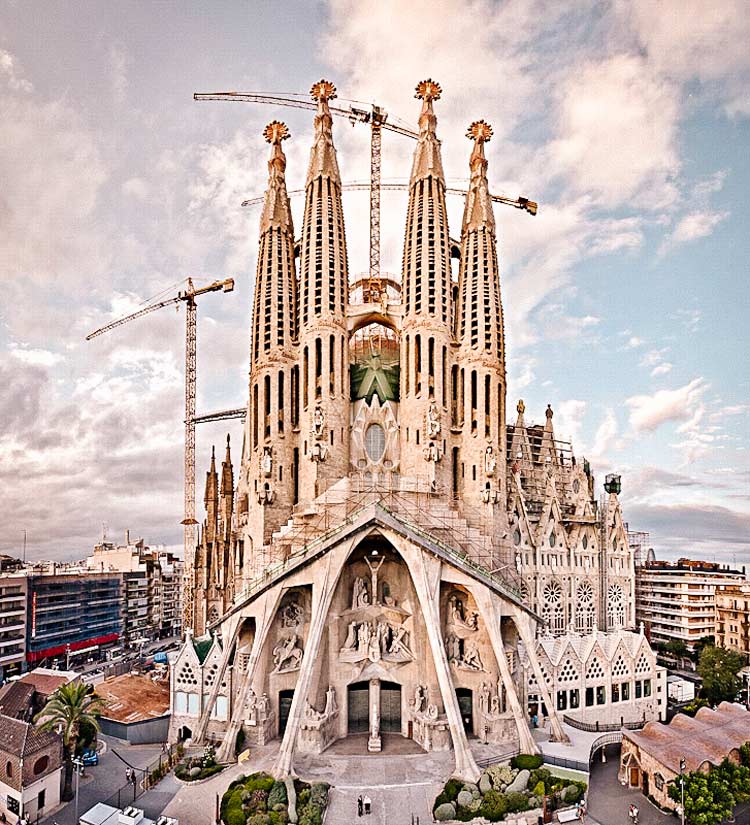
37. MOSQUE-CATHEDRAL OF CORDOBA, CORDOBA, SPAIN
As the name suggests, the Mosque-Cathedral of Cordoba was originally a mosque built in 785, and was then converted to a cathedral in 1236 – when the catholic church took over. The building has a lot of history and is famous for being one of the most impressive landmarks in Europe!
The mosque-cathedral is a perfect example of Moorish architecture. Drawing heavily from Islamic influences, and interspersed with elements of Gothic and Baroque styles, the monument represents a turning period in the history of Spain.
Among its key features are the Patio de los Naranjos (Court of the Orange Trees), and the cathedral’s bell tower (formerly a minaret).
The Mosque-Cathedral of Cordoba was included in the UNESCO World Heritage Sites list in 1984.
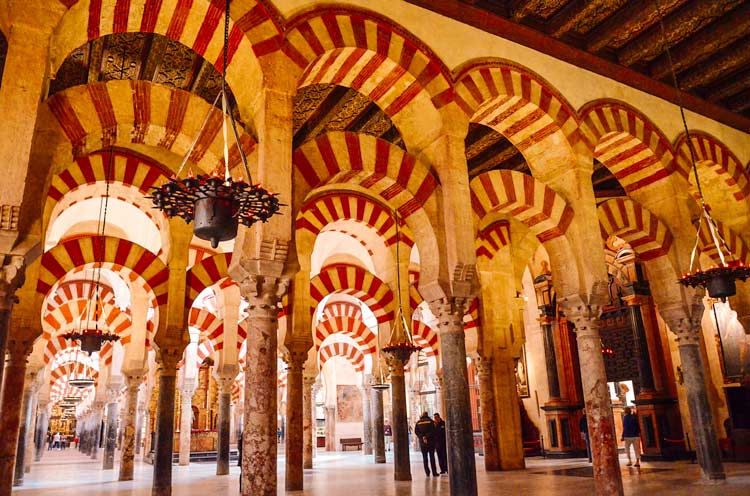
38. ROYAL PALACE, MADRID, SPAIN
Palacio Real, or the Royal Palace in Madrid, is the official residence of Spain’s royal family. With over 1,35,000 square meters in area and more than 3000 rooms, this is the largest functioning royal palace in Europe.
The royal family doesn’t actually live here anymore. The Zarzuela Palace serves as the residence of the reigning monarch in Spain, while the Royal Palace is mainly used as a venue for state ceremonies.
Built in the 18th century, Palacio Real sits on the site of a former 9th-century Arabic fortress – the Alcázar of Madrid.
The interior of the Royal Palace is a testament to the eclectic tastes of past Spanish monarchs. Each room has a different theme and color palette – from renaissance golds, baroque whites, and neo-classical grays; to Rococo blues, Victorian purples, and 19th century greens.
Particularly fascinating is the plentitude of artistic wealth that the interior of Royal Palace boasts of. Works by Velásquez, Carravagio, and Zurbarán are scattered throughout the palace. The stairwell is decorated with frescoes by Goya and Borgoña. The library houses works of art and over 60,000 books.
[You Might Like: Most Famous Landmarks in Spain You Should Visit]
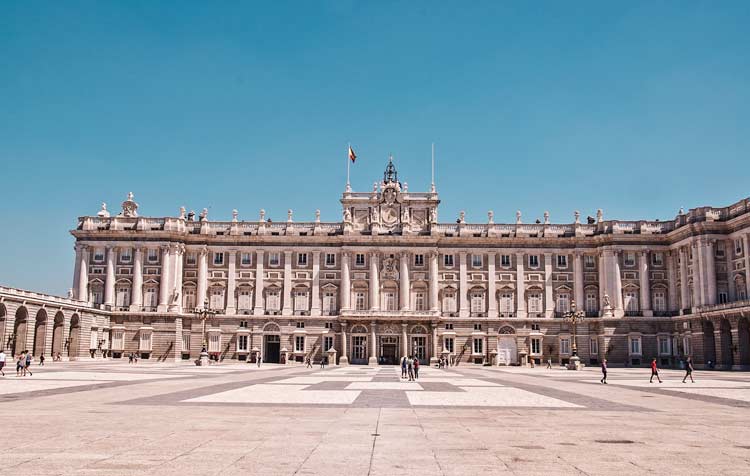
39. BELÉM TOWER, LISBON, PORTUGAL
If you’re in Portugal, make sure to spend at least four days in Lisbon and Porto to maximize your experience of the country.
Amongst all of Lisbon’s most famous landmarks, Belém Tower really steals the show. It is one of the world’s best examples of the Manueline style, an architectural form developed in Portugal.
The tower sits on an island in the Tagus river. A UNESCO World Heritage Site since 1983, the Belém Tower was built at the peak of the Portuguese Renaissance. It served as a point of embarkation and disembarkation for Portuguese explorers.
Today, the Belem Tower represents a ceremonial gateway to Lisbon and a symbol of the European age of discovery during the early modern period.
Nearby, the Jerónimos Monastery offers a deeper insight into this unique architectural style. If you have time, there is also ample room and plenty of greenery to enjoy a leisurely walk in the area.
40. PENA PALACE, SINTRA, PORTUGAL
Sintra’s Pena Palace is a beautiful Portuguese monument to visit, with its breathtaking stained glass windows and unique exterior decor.
Completed in 1854, the Pena Palace is built in Romanesque Revival style with shared influences of Neo-Gothic, Neo-Islamic, and Neo-Rennaisance architecture. The Pena Palace’s most discerning feature is its exterior facade, featuring vibrant colors of red and yellow.
The entire palace stands on a hill in the Sintra mountains and can be seen all the way from Lisbon, on a clear day.
The palace is surrounded by 200 hectares of what’s called the Pena Park. The flora here is as diverse and eclectic as the architectural interplay within the palace. You can spend hours wandering through the park’s labyrinth cross-lanes and studying the exotic vegetation.
Included on the UNESCO World Heritage list, it’s no wonder that the Pena Palace is one of Europe’s most iconic landmarks.
41. CHATEAU DE CHILLON, VEYTAUX, SWITZERLAND
One of the most famous landmarks in Europe is Chateau de Chillon, located on the shores of Lake Geneva. The castle has stood for nearly 900 years and was a major influence on Switzerland’s Gothic Revival phase. It is among the most visited medieval castles in Switzerland and Europe.
Built to serve as a residence for the Duke of Savoy, Chillon Castle controlled all trade activities in the Lake Geneva region for centuries.
It now belongs to the Swiss canton of Vaud, and is listed as a Cultural Property of National Significance.
Inside, you will find numerous frescoes which are perfectly preserved. It also has bedrooms, courtyards, and halls to explore, plus a drawbridge and dungeon.
42. MATTERHORN, ZERMATT, SWITZERLAND
The Matterhorn is one of the most well-known mountains in Switzerland. It’s so iconic that it has been immortalized in the packaging of Swiss chocolate Toblerone (yeah, the mountain on there IS the Matterhorn!)
Standing at 4,478 meters (14,692 ft) high, the Matterhorn is one of the highest mountain peaks in Europe. This natural landmark spans the Alpine divide between Switzerland and Italy, overlooking the Swiss border (car-free) town of Zermatt.
The Matterhorn owes its German name to its almost perfect pyramid shape. It has come to become a common symbol for all of the Alps in general.
While the mountain itself continues to be a challenging summit for even the most experienced climbers, there are some great ways to catch a view of the Matterhorn. You can hike some of the nearby slopes, take a cable car up to the Matterhorn Glacier Paradise, or catch the train to Gornergrat viewing platform to enjoy unparalleled views of the Matterhorn.
43. PRAGUE CASTLE, PRAGUE, CZECH REPUBLIC
Prague Castle holds a Guinness World Record as the largest ancient castle in the world. This beautiful Gothic structure spreads over a sprawling 70,000 square meters, and it is definitely worth checking out while you’re there.
While originally constructed in the 9th century, the castle has undergone many renovations over the years, especially because it served as the seat of power for Bohemian kings, Holy Roman emperors, and Czechoslovakian presidents.
The Prague Castle exhibits an interesting architectural mix of Gothic (St. Vitus Cathedral), Romanesque ( Basilica of St. George), and Baroque (Spanish Hall).
In addition to 700 rooms, cathedrals, palaces, and defense towers, the castle is also known for its gardens. These are free to access and are great for a relaxed afternoon.
In case you’re looking for things to do for free in Prague, you can also catch the National Change of Guard at the castle.
44. CHARLES BRIDGE, PRAGUE, CZECH REPUBLIC
Prague is beautiful for many reasons, but one of the things that make it stand out is its stunning architecture.
Charles Bridge is fantastic because of the detail that has gone into building it, and the sheer beauty of it.
It was constructed between 1357-1402, which makes it a relatively young bridge, built in a time when Europe was going through a period of great change. Constructed over the Vltava River, this is the oldest bridge in Prague, and was used as an important trading route for that time.
The length of the stone arch bridge is lined with 30 baroque statues, which are mostly of religious figures. While the bridge is busy pretty much all through the day, it’s worth experiencing the bridge at night. It’s lit up by floodlights, which highlight all of its details to perfection.
Charles Bridge is one of the most romantic landmarks in Europe, and a must-see when you’re in Prague.
[You Might Like: 46 Things You Can Do in Prague for Free]
45. ST. BASIL’S CATHEDRAL, MOSCOW, RUSSIA
St. Basil’s Cathedral is located on the Red Square in Moscow and is one of the most iconic landmarks in Europe. Officially called the Cathedral of the Intercession of the Most Holy Theotokos on the Moat, it is a Russian Orthodox church.
It was built in 1555-1561 on the order of Tsar Ivan the Terrible and marks the capture of Astrakhan and Kazan.
The cathedral is known for its distinct and colorful architecture, especially its nine onion-shaped domes which, collectively, look like a towering bonfire flame. Its unique structure and historic significance earned it a spot in the UNESCO World Heritage Sites list in 1990.
St. Basil’s Cathedral has undergone several rounds of renovation over the years. but it continues to be a hugely popular tourist destination and a symbol of pride in Russia.
46. PETERHOF PALACE, ST. PETERSBURG, RUSSIA
Peterhof Palace and garden complex is one of the finest examples of rococo architecture in Russia. The site is famous for its fountains and cascades, which have been depicted by many artists.
Commissioned by Peter the Great in 1714, the entire complex was constructed to the equivalent of the Palace of Versailles in France. The palace was an a part of his effort to “westernize” Russia.
The initial design and layout were created by famous French architect Jean-Baptiste Le Blond.
The Palace complex contains a series of smaller palaces like the Grand Peterhof Palace and the Grand Menshikov Palace. It also has an exceptional garden where the gilded fountains and sculptures are.
Peterhof Palace is an important landmark in Russia and a UNESCO World Heritage Site since 1990.
47. THE STATE HERMITAGE MUSEUM, ST. PETERSBURG, RUSSIA
Located in St. Petersburg, the Hermitage is the largest art museum in the world by gallery space. It draws over a million visitors every year, and is one of the most popular landmarks in Russia.
It was built in 1764 on the orders of Empress Catherine the Great, to display a collection of paintings she purchased from the Prussian merchant Johann Ernst Gotzkowsky.
The museum has over three million exhibits, from da Vinci’s Madonna Litta to Picasso’s Dryad. The collections on display mark some of the most significant events and periods in world history.
The Hermitage museum is free to visit on the third Thursday of every month. Students enjoy free entry to the museum every day, except Mondays when it is officially closed.
48. CHURCH OF THE SAVIOUR ON SPILLED BLOOD, ST. PETERSBURG, RUSSIA
This is a Russian orthodox church in St. Petersburg.
Built in 1881 during the reign of the last Tsar of Russia, Alexander III, the Church of the Saviour on Spilled Blood commemorates the life of his father. It was constructed at the site of his murder by Russian nihilists.
The Church is uniquely famous for its bright, jewel-like colors and neoclassical architectural style. It is one of the main attractions of St. Petersburg.
You can follow a visit to the church by heading to the State Hermitage Museum, which is only a short walk away.
49. HAGIA SOPHIA, ISTANBUL, TURKEY
Hagia Sophia is one of the most iconic structures in all of Europe, and possibly even the world. Though it was originally built as a church, it has been a mosque and a museum throughout its long history.
Hagia Sophia offers an insight into the Byzantine period since its construction in 532. It also sheds a light on the political, religious, and artistic changes that followed Constantinople’s capture.
Officially called the Holy Hagia Sophia Grand Mosque, the Hagia Sophia is a UNESCO World Heritage Site, and a must-visit European landmark.
FINAL THOUGHTS ON FAMOUS EUROPE LANDMARKS
If you are looking for a travel destination that will offer you an amazing array of different cultures and experiences, Europe is the place to go. With its many iconic landmarks, diverse landscapes, and interesting history, Europe has something for everyone.
And of course, there are many more beautiful and interesting places to see on the continent – but these should give you a good starting point to catch the most famous landmarks in Europe.
Happy exploring!
Visiting Europe soon? Check out these articles:
************************************
This post might contain affiliate links. My full disclosure and privacy policy is really boring, but you can read it here.


